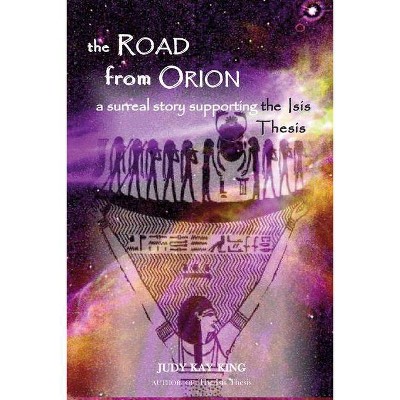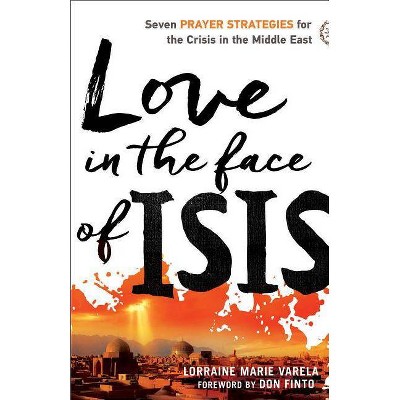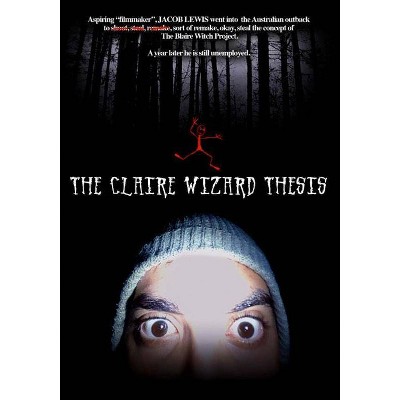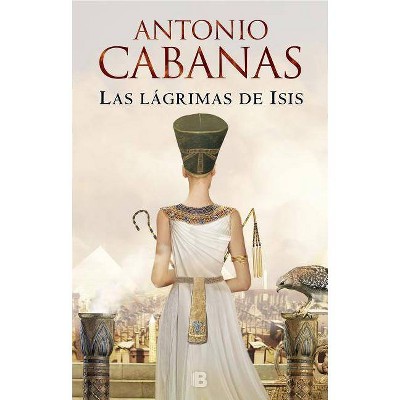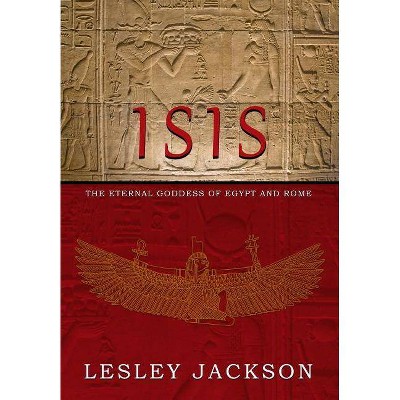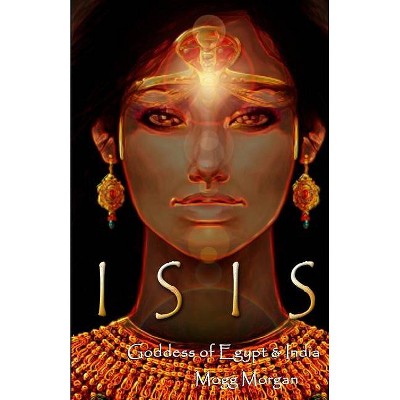The Isis Thesis - by Judy Kay King (Paperback)

Similar Products
Products of same category from the store
AllProduct info
<p/><br></br><p><b> About the Book </b></p></br></br><p>Presented at 2006 Second International Congress for Young Egyptologists, the study examines ancient Egyptian texts through the dual lens of contemporary science and human behavior, showing humans have potential to evolve at death. </p><p/><br></br><p><b> Book Synopsis </b></p></br></br><p><strong><em>The Isis Thesis</em> is a transdisciplinary study of eight major ancient Egyptian texts, revealing that over 870 decoded signs, including art and architecture, communicate modern scientific knowledge about microbiology and human potential for genetic immortality. </strong>Put simply, the Egyptian afterlife is the quantum domain, and their deities are signs for microbial genes and proteins, describing a biophysical process of horizontal gene transfer (DNA exchange between species) for radical human evolution.</p><p>The initial methodology included multiple reviews of the least corrupted Pyramid and Coffin Texts to categorize 108 key themes that were synthesized into 30 major idea strands, defining textual events and activities of major deities. From this analysis, a hypothetical biological model of primary signs emerged for further testing in six additional texts: Amduat, Book of Gates, Book of Two Ways, Edifice of Taharqa, Papyrus of Ani including the Theban Recension. Abductive reasoning allowed modifications to the working model with verification of Egyptian principles supported by modern scientific research. A logical, holistic matrix emerged, explaining horizontal gene transfer as an option for afterlife transformation.</p><p>On the quantum level of DNA transcription, the texts depict and describe proteins binding, folding and tunneling, using modern terms and images to explain black hole/white hole formation/evaporation processes. Thus, they translate a DNA wormhole into a quantum mechanical Einstein-Rosen bridge back to the Early Universe. In this biophysical evolutionary process, the activities of Egyptian deities are signs explaining the ancient glycolysis gene expression network in our cells and the lifestyles of a complex bacterial virus that uses this ancient developmental pathway.</p><p>Surprisingly, other historical religious deities mirror the activities of Egyptian deities, so religion has also preserved an evolutionary science for survival of human DNA in a quantum environment. The study spanning 2000 years of Ancient Egyptian texts reveals a microbiological basis for pharaonic psychology, literature, architecture and art. In this consistent model, the value or meaning of each sign emerged, not by choice, but rather from an analysis of each sign's interaction within a matrix of 870 interlinked thematic signs. The texts support an option for postmortem evolution that is mediated by an ancient virus called bacteriophage Lambda.</p><p>The Isis Thesis presents scientific evidence that our semiotic system is based on underlying physical and chemical principles inherited from our microbial ancestors, so our microbial DNA is ordering our society space. Examining ancient Egyptian texts, art and architecture through the dual lens of contemporary science and human behavior, the study shows that human beings have the potential to evolve at death into a unique hybrid species. See www.isisthesis.com</p><p/><br></br><p><b> Review Quotes </b></p></br></br><br>Life Technology News Thursday, October 05, 2006 Written By Judy Kay King, The Isis Thesis is a book that promises to turn the worlds of Science and Egyptology on their respective heads, uniting the two in a way that a few years ago, nobody could have predicted. Ms King has spent several years using a technique called biosemiotics - the biological science of signs and messages in living systems, to study every facet of Egyptology. After years of intensive research, she has arrived at an astonishing conclusion, that there is an undeniable interrelationship between the mythology of ancient Egypt and molecular biology. The Ancient Egyptians were aware of not only bacterial genetics but also molecular biology, cosmology related to string theory, back hole theory and even dark energy. To put it simply, Egyptian cosmology is mirrored by microbiology to such an extent that it cannot be considered coincidence. The Ancient Egyptians had a deep understanding of science and encoded their scientific knowledge in the Egyptian language; five thousand years later, we have clear evidence that this is the case. Judy King's research has decoded a complex scientific sign system which maps the pathway of a chemical reaction, and provides the key to symbols found in the ancient myths of Sumer, Babylonia, India, and Greece. For a long time, conventional understanding of Ancient Egyptian Hieroglyphs has considered them as being strictly funerary in nature. However, The Isis Thesis suggests that while accepting their funerary guise, encoded in the hieroglyphic symbols themselves is a fully developed science that rivals and in some cases surpasses modern science. Judy Kay King puts forward the remarkable assertion that the Ancient Egyptians had quite a detailed working knowledge of molecular biology, astrophysics, molecular chemistry, and quantum physics. The Isis Thesis shows how such disciplines were hidden for thousands of years, waiting for their secrets to be unlocked. The book takes areas such as microbiology and genetics and uses semiotics (the theoretical framework for the study of the meaning of language, signs and symbols) to explore these areas from a modern standpoint and then through the perspective of the Ancient Egyptians, explaining how these areas were incorporated into the ancient texts. Ms King covers a wide range of scientific understanding in her research. The methodology employed in The Isis Thesis, is itself unique. The author establishes a demonstrative template of thirty different themes to outline her hypothesis. The point Judy Kay King makes is both startling and fascinating. The contention she puts forward is that the ritual and mythology of the Egyptian understanding of the journey to the afterlife incorporated all natural sciences. Passages from nine well-known ancient texts including: The Pyramid Texts, the Coffin Texts and The Book of Gates have been carefully studied during the course of the research. The book identifies the sections, words and themes that illustrate how this scientific knowledge was woven into the fabric of the texts themselves. By any standard, this was a formidable undertaking. The author presents as evidence 870 decoded signs that define not only the protein path of Phage Lambda and its carrier host E. coli, but demonstrates how the deceased symbolically followed that path on their journey to the afterlife. If the ideas put forward in The Isis Thesis are borne out, it offers clear evidence that religious and scientific understanding of the Ancient Egyptians was based on the structure of a simple protein, Phage Lambda and its relationship with a simple bacteria, E Coli. Not only is that structure imprinted on our Universe as a whole, it suggests that the Egyptian concept of the microcosm and macrocosm was underpinned not by mythology, but by science<br>
Price History
Price Archive shows prices from various stores, lets you see history and find the cheapest. There is no actual sale on the website. For all support, inquiry and suggestion messagescommunication@pricearchive.us
